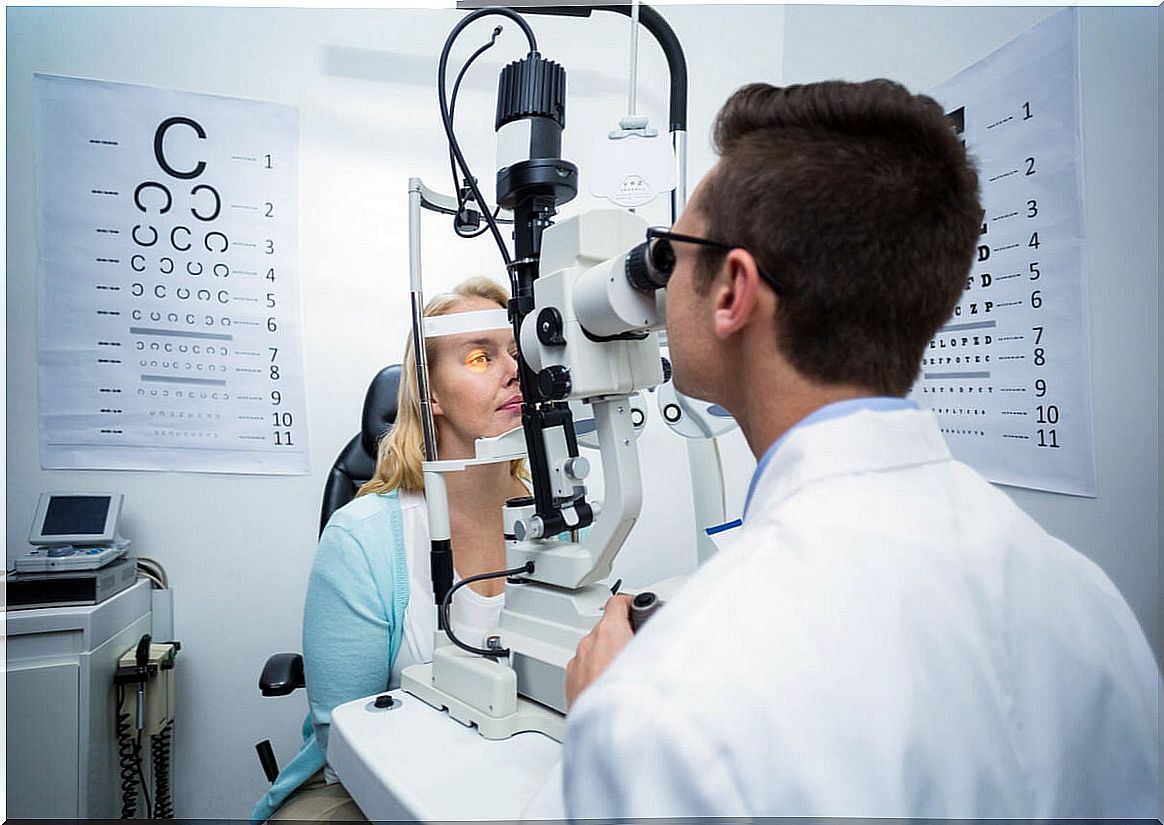Hyperopia: Everything You Need To Know
Much of the world’s population suffers from visual problems. One of the most common causes is hyperopia, so we’ll tell you more about it below.

Vision problems are very common around the world and can vary from person to person; some affect near vision, while others prevent distant objects from being seen. One of them is hyperopia, so we will tell you everything you need to know about this pathology.
In simple terms, farsightedness is the inability to see nearby objects clearly. They are usually seen as blurry or with blurred edges. This is a frequent problem worldwide and it is estimated that 10% of the population suffers from it.
Why does hyperopia happen?
In order to understand why this pathology occurs, it is necessary to explain how sight works. The human eye has two media in charge of projecting light: the cornea and the lens. They direct the light rays to a specific point on the retina where there is greater visual acuity.
When light is not directed at the exact point, vision problems can arise. In the specific case of hyperopia, the eyeball has a smaller diameter than usual, which causes the light to be projected on the back of the retina and the power of focus is reduced.
On the other hand, an abnormality in the shape of the cornea, such as the cornea plana, can also be the cause of this condition, as it has the same effect on the eye.

Symptoms of the disorder
The most characteristic symptom of this disease is the difficulty to see nearby objects, those that cannot be focused and tend to be blurred. It also makes it difficult for all activities that involve close-up viewing, such as reading or writing.
In addition to blurred vision, patients often have eye fatigue. This occurs because the eye tries to correct the existing problem on its own and ends up trying harder than it should. This fatigue can cause other symptoms such as the following:
- Headache when reading or writing.
- Red eyes at the end of the day.
- Ocular pain.
- Strabismus : deviation from the gaze axis.
Diagnosis of hyperopia
Fortunately, farsightedness is easy to diagnose in adults and only requires an eye exam. First, the specialist will specify a visual acuity test with different charts at specific distances.
It is also likely that a refractive examination will be necessary, in order to establish the difference with other pathologies, such as myopia, astigmatism or presbyopia.
Other tests that may be necessary include inspection of the retina and visual graduation. In the first, the pupils will be dilated and an instrument will be used to observe the inside of the eye, while in the second, it will be seen through various lenses to try to correct the problem.
Treatment for hyperopia
The method used to treat farsightedness can vary greatly, depending on the age of the patient and the degree of condition. However, all available treatments are aimed at correctly centering the light on the retina and this can be achieved through the following procedures.
Wearing glasses
Wearing corrective lenses is the least invasive way to treat this disease. It can be applied to patients of all ages. The idea is to compensate for the flattening of the cornea or the short diameter of the eye and to achieve a correct refraction of the light.
People will be able to choose between wearing glasses or contact lenses. The former come in a wide variety and can be adapted to other existing vision problems, while the latter are a subtle way to make the correction, as long as proper hygiene is maintained.
Surgery
For those adult patients who do not wish to wear lenses, there is always the option of performing a surgical treatment. They are similar to those used to correct other visual disturbances and include the following options:
To be
There are three types of refractory laser surgeries to correct farsightedness. However, the most used is the q situ ueratomileusis in assisted laser (LASIK), which also serves for myopia. This surgery creates a flap over the cornea and uses the laser to correct the curvature of the cornea.
The other available laser surgeries are as follows:
- Laser-assisted subepithelial keratectomy (LASEK).
- Photorefractive keratectomy (PRK).
Eye lens implant
There are two types of eye lens implants capable of correcting hyperopia, however, they are used only in severe cases. First, there are the phakic lenses: they are placed between the cornea and the lens without the need to remove the latter.
On the other hand, there are pseudophakic intraocular lenses, which are used to correct cataracts. These are placed in patients between the ages of 40 and 45 to replace the entire lens.
Hyperopia in children
So far we have talked about the disease and its presentation in adults, however, hyperopia in children has a curious presentation. In young children, the symptoms may not be obvious. In this way, it is possible that there is no visual disturbance.
This is due to the fact that the eye muscles are stronger and both the cornea and the lens are more flexible. Therefore, they are able to correct the defect.
Symptoms to identify
Because visual acuity failure will be compensated for in children, detecting childhood farsightedness can be a real challenge. However, watch out for symptoms such as the following:
- Difficulty reading or writing.
- Low academic performance and difficulty concentrating.
- Visual fatigue
- Redness of the eyes.
- Tearing, itching or constant rubbing.

Evolution and treatment in children with hyperopia
At this point it is important to note that we are all born hyperopic, however, this defect is corrected after the first months of life. The real problem lies when it is not and the alteration is prolonged.
For this reason, it is recommended to carry out a visual examination every 6 months to the little ones in the house, from the age of 4. This is done in order to detect the abnormality early and treat it in a timely manner.
If hyperopia is not corrected in time, a pathology known as lazy eye can develop , which is the loss of visual acuity in one or both eyeballs. In addition, some children also develop a deviation or strabismus.
In most cases, the defect disappears before adolescence, however, if it does not subside or is very serious, the specialist will study the use of corrective lenses. In general, this occurs when hyperopia is high and causes symptoms.
When to go to a specialist?
This condition can get worse very quickly in a short time, without the person noticing. For this reason, it is important to see a specialist at the moment when symptoms appear. In this way, you can receive timely treatment and improve visual acuity.
In the case of children, tests should be carried out periodically in order to detect hyperopia in time. This will be the only way to avoid a defect in the long term.









